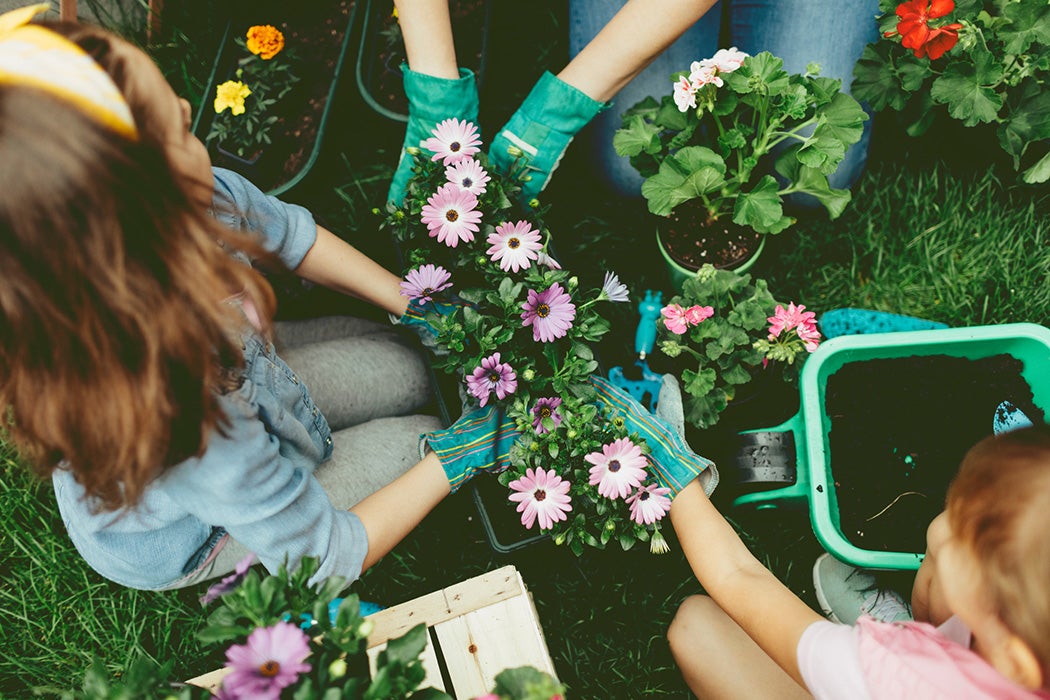Most of us can’t join a tree planting effort right now. We can’t physically protect an endangered species. We can’t assemble for a protest. Luckily, there are still ways to go green without setting foot outside the door.
Keep Recycling
The coronavirus pandemic disrupted the already complicated business of recycling, but the piles of trash we produce shouldn’t be dumped in landfills or the ocean. To put some numbers in perspective, to-date, humans produced 8,300 million metric tons of plastic, which is 25,000 times the weight of the Empire State Building. Seventy nine percent of that has ended up in landfills or the ocean. We’ve gotten better, however. In 1988, our municipal solid waste totaled 140 million metric tons per year. Back then, the daily amount of the solid waste we produced would fill about 63,000 garbage trucks, which would stretch the entire distance between San Francisco to Los Angeles—with most of the garbage destined for landfills. In 2017, we generated 267.8 million tons, but approximately 67 million tons of that were recycled and 27 million tons were composted.
Luckily, according to some sources it seems that during lockdowns Americans are recycling better than ever. Perhaps while we are all staying home we can also learn to use less and waste less.
Save Water
We all know that freshwater is a hot commodity in the 21st century. That’s why it’s so important to maintain a working infrastructure, minimizing leaks. One recent report found that many urban centers have leakage problems—and not only from hydrants. Water mains typically account for at least half of the water lost. Residential homes leak too. The Environmental Protection Agency estimates that about ten percent of homes have leaks that waste 90 gallons or more every day. The average household’s leaks can send nearly 10,000 gallons of fresh drinking water down the drain every year. As people spend time at home during lockdowns, noticing drippy faucets and running toilets is easier than ever. The EPA also has another way to spot a leak. If a family of four exceeds 12,000 gallons during the colder months of January or February, there are serious leaks.
Consider Solar
As the economy starts to reopen, clean energy industries are expected to make a sweep. Because lockdowns drastically cut energy demand, the need for oil and coal has dropped, paving way for renewable options. In fact, once the world starts to return to normal, the only energy sources expected to grow will be the renewable ones—primarily due to the low operating costs and easy access. One recent article noted that solar has become one of the cheapest forms of energy generation. In the United States, the amount of solar power installed grew by 485 percent between 2010 to 2013. During that time, the price of a typical household system dropped by almost 30 percent. So far this year, renewable electricity generation grew by three percent during the first quarter and accounted for nearly 28 percent of electricity supply, up from 26 percent a year earlier. As the world continues to go green, giving roof solar panels a shot may be a good idea.
Weekly Newsletter
Eat More Plants
It’s a proven fact that reducing meat consumption is healthy for both the people and the planet they live on. Eating more plant-based foods can decrease blood pressure, cholesterol, and blood sugar. Plant-based diets are also more sustainable because they use fewer natural resources than diets that involve animal products. According to some sources, worldwide animal agriculture contributes more greenhouse gas than all emissions from transportation, including planes, trains, and vehicles. Animal agriculture is also one of the leading causes of deforestation and has resulted in the loss of pastures, including rainforests. Plus, crops grown to feed the animals are often sprayed with pesticides, such as glyphosate, which contaminates water and kills bees. During lockdown, home cooking and email chain recipes hit record highs—it might be the perfect moment to experiment with new plant-based recipes, creating new, healthy favorites.
Garden Away!
About 70 percent of American households do some kind of gardening work—planting flowers or growing vegetables and fresh fruit. Connecting with nature can help with coronavirus blues, but gardening has other important benefits—it can help sequester carbon. When following the essential principles of organic gardening—including composting, using organic fertilizer, planting trees, and not leaving the soil bare to avoid erosions—an average urban plot can become an efficient carbon sink. And with some work, it will also yield some veggies for dinner.
Support JSTOR Daily! Join our new membership program on Patreon today.







